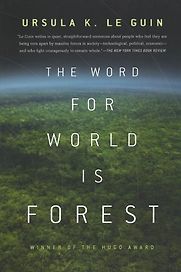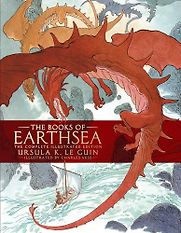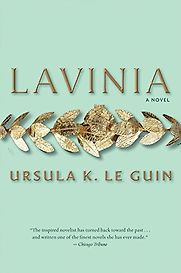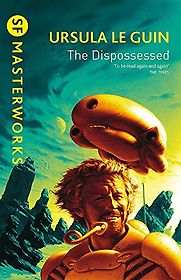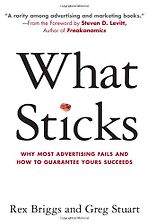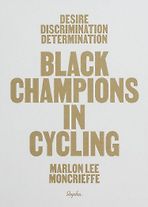Recommendations from our site
“This is part of Le Guin’s Hainish Cycle…It follows a human logging company on a small planet that’s covered in ocean and a few islands covered in forest. They’ve cut down all the trees on Earth, so they are excited to come and grab at these resources and send them home to make a lot of money. The conflict is that there are people living on the planet already in the forests. The logging companies immediately start exploiting them for labor and various other abuses. These very peaceful people who have lived sustainably with their forests, one of them snaps and decides to fight back and eventually, there’s a violent overthrow of the logging company and they get shoved back off the planet. It’s not really a happy ending because as the native people discuss amongst themselves at the end, now they’ve accepted violence into their society, which they haven’t before. So again, this is a mirror. It’s a look at how colonizers and especially resource companies—like mining and logging companies—abuse both the land and the people living on the land, and shows us how harmful that attitude could be in space.” Read more...
The Best Sci Fi Books on Space Settlement
Erika Nesvold, Physicist
“It’s set on a planet that has been colonised by Terrans—people from Earth, in the interspecies Hainish Cycle—but there are indigenous people on this planet, who are humanoid but look distinctly different. They are furred, they’re much shorter in stature, and their pigmentation is green. The colonists regard them as subhuman and they’re enslaved: forced into labour camps to participate in a forestry project. This novella was first published in 1972, and it seems very clear that it relates to America’s occupation of Vietnam at that time because, in addition to deforesting the planet, one of the things they use to attack the indigenous people is called ‘burning jelly.’ So that’s directly evoking the imperialism of the US Army of the time.” Read more...
Sherryl Vint, Literary Scholar
Our most recommended books
-

Made to Stick
by Chip Heath and Dan Heath -

What Goes Around: A London Cycle Courier's Story
by Emily Chappell -

What Sticks
by Rex Briggs and Gregg Stuart -

Higher Calling: Road Cycling’s Obsession with the Mountains
by Max Leonard -

Up The Organization
by Robert Townsend -

Desire Discrimination Determination: Black Champions in Cycling
by Marlon Moncrieffe
